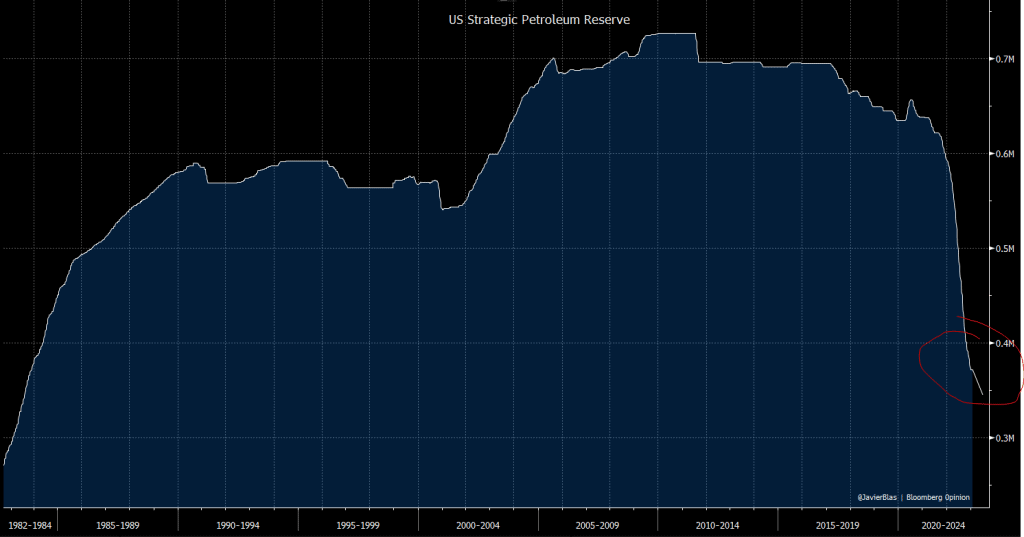The Biden administration’s Department of Energy (DOE) announced plans Monday to sell an additional 26 million barrels of oil from the Strategic Petroleum Reserve (SPR), and bringing the SPR to its lowest level since 1983, Reuters reported Monday.
The Biden administration sold a record-breaking 180 million barrels of crude oil from the SPR last year in a bid to lower gas prices following Russia’s invasion of Ukraine, and Monday’s sale — fulfilling a congressional mandate from 2015 — is set to bring its level to roughly 372 million barrels, Reuters reported.
The administration had previously rejected the initial bids made by oil companies to begin refueling the SPR with 3 million barrels of oil because they were not a “good deal” for taxpayers.
In the news: Florida Governor DeSantis Targets “Judicial Hellhole” In “Bad Faith” Law

The SPR was created in 1975 to both protect the U.S. economy from sudden shocks to oil supply as well as defend the U.S. from efforts by oil-producing countries to pressure the U.S. into giving up foreign policy concessions for oil, the Council on Foreign Relations reported.
By draining the SPR at such an aggressive rate, the private sector has fewer incentives to maintain its own adequate reserves to meet demand, and the U.S. now stands far less prepared to respond to future supply shocks, according to senior research fellow Benjamin Zycher, of the American Enterprise Institute.
In the news: Rep. Steube Takes On Federal “Motor Voter” Law, Raising The Specter Of Voting Fraud
“The SPR has a long history of protecting the economy and American livelihoods in times of emergency oil shortages,” the DOE press release reads. “However, this action is specific to meeting its sale requirements to Congress.”
The first batch of oil to be refilled to the SPR is unlikely to be delivered until after the conclusion of the 2023 fiscal year at the end of September, Reuters reported. Congress canceled 140 million barrels worth of congressionally mandated sales as part of the 2022 omnibus spending package, the DOE reported.
The administration has targeted a price of $70 per barrel to refill the SPR, but U.S. crude prices are roughly $80 amid concerns that Western sanctions and production cuts would limit the supply of Russian oil to the rest of the world, Reuters reported. The SPR was filled at an average price of roughly $60 per barrel, which would mean even this target of $70 per barrel would be an approximately $1.8 billion loss.
Android Users, Click Here To Download The Free Press App And Never Miss A Story. Follow Us On Facebook Here Or Twitter Here. Signup for our free newsletter by clicking here.

